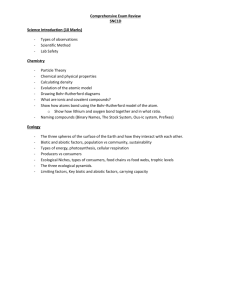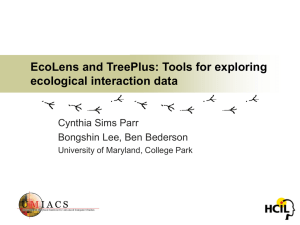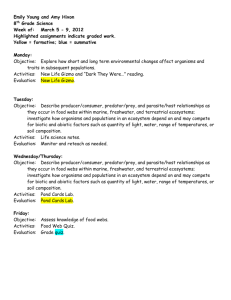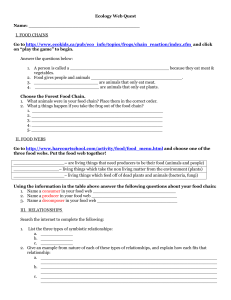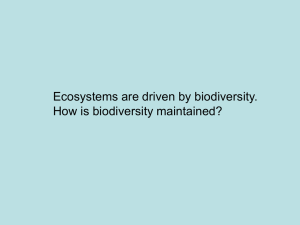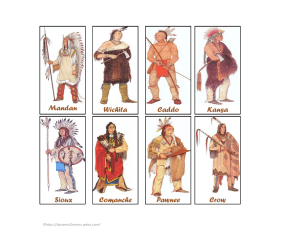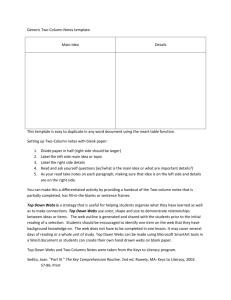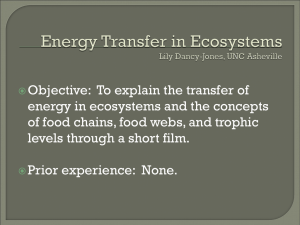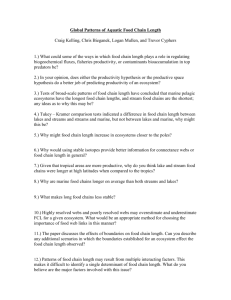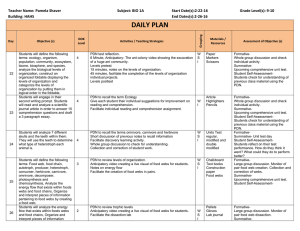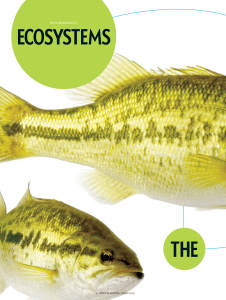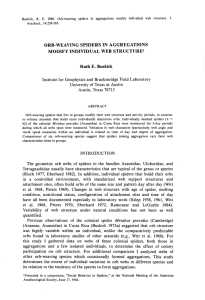Abstract.doc
advertisement
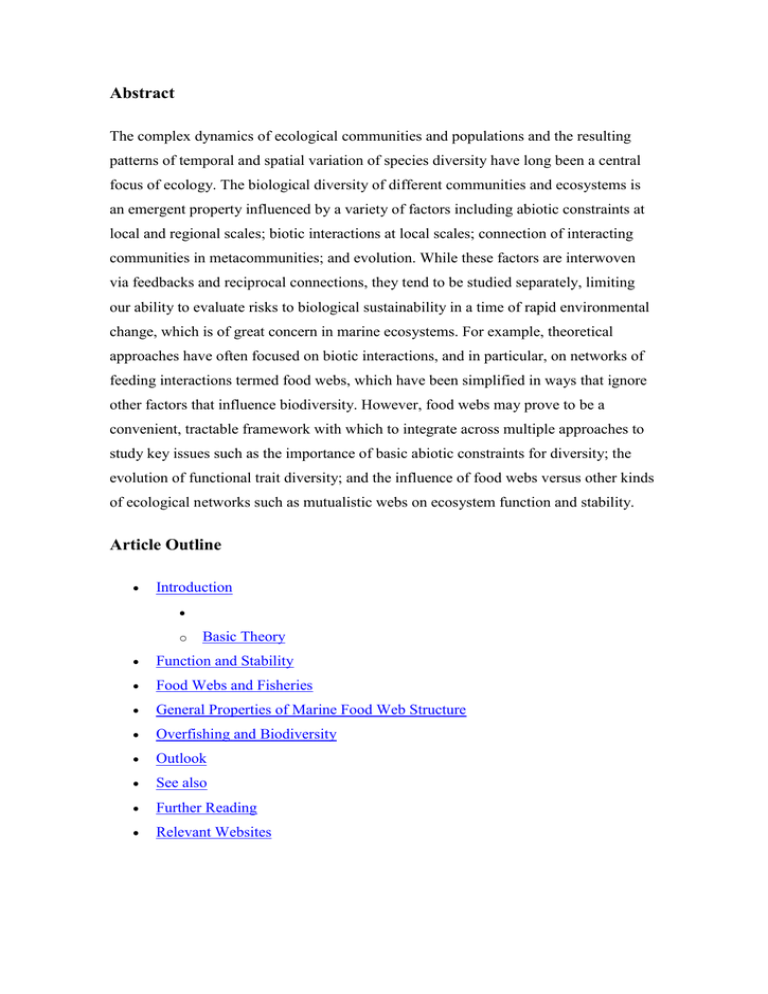
Abstract The complex dynamics of ecological communities and populations and the resulting patterns of temporal and spatial variation of species diversity have long been a central focus of ecology. The biological diversity of different communities and ecosystems is an emergent property influenced by a variety of factors including abiotic constraints at local and regional scales; biotic interactions at local scales; connection of interacting communities in metacommunities; and evolution. While these factors are interwoven via feedbacks and reciprocal connections, they tend to be studied separately, limiting our ability to evaluate risks to biological sustainability in a time of rapid environmental change, which is of great concern in marine ecosystems. For example, theoretical approaches have often focused on biotic interactions, and in particular, on networks of feeding interactions termed food webs, which have been simplified in ways that ignore other factors that influence biodiversity. However, food webs may prove to be a convenient, tractable framework with which to integrate across multiple approaches to study key issues such as the importance of basic abiotic constraints for diversity; the evolution of functional trait diversity; and the influence of food webs versus other kinds of ecological networks such as mutualistic webs on ecosystem function and stability. Article Outline Introduction o Basic Theory Function and Stability Food Webs and Fisheries General Properties of Marine Food Web Structure Overfishing and Biodiversity Outlook See also Further Reading Relevant Websites
